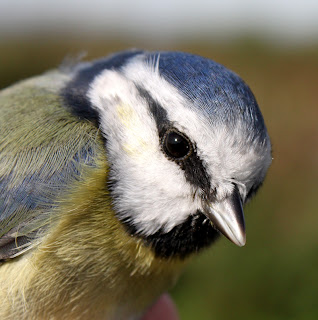After the busy days of the last two weeks, Monday was a bit of rest day, apart that is from inputting the many records from recent ringing into the Integrated Population Monitoring Reporter (IPMR) database. Will worked on Monday, but borrowed a few hours “flexi” this morning for another morning of ringing on Rawcliffe Moss before he heads off or a break in Scotland and a bit of lazy salmon fishing.
So after the IPMR task we began today with a running September total of 442 new birds of 22 species here, which included 135 Meadow Pipits, 188 Chaffinches and 39 Goldfinches. Our recent catches have been very consistent in terms of numbers and species, a trend which continued this morning with another 63 new birds, the majority of which proved to be even more of those diurnally migrating Meadow Pipits and Chaffinches.
So after the IPMR task we began today with a running September total of 442 new birds of 22 species here, which included 135 Meadow Pipits, 188 Chaffinches and 39 Goldfinches. Our recent catches have been very consistent in terms of numbers and species, a trend which continued this morning with another 63 new birds, the majority of which proved to be even more of those diurnally migrating Meadow Pipits and Chaffinches.
New birds: 37 Chaffinch, 15 Meadow Pipit, 2 Chiffchaff, 2 Lesser Redpoll, 2 Dunnock and 2 Blue Tit with 1 each of Great Tit, Blackcap and Reed Bunting.



One of the juvenile Lesser Redpoll looked particularly young and speckle faced, perhaps from a late nest, as a pair of adults can have three broods.


Although we counted 12 + Reed Buntings over today, it was slightly disappointing to catch just one. Reed Buntings are very much a bird of visible autumn migration, with the annual movement through Rawcliffe Moss probably related to their withdrawal from upland areas of the Pennines and Scotland as a preparation for the winter period.
The visible diurnal migration of Reed Buntings is less obvious than other species e.g. Chaffinches or Meadow Pipits, both of which use lots of contact calling to stay in touch with other individuals during their overhead flights. In contrast Reed Buntings call less and although they travel or join in with other species movements and feeding parties, often Chaffinches and Meadow Pipits, the less numerous buntings can easily be missed by observers not tuned into their calls.


Our visible migration counts today, all from the north but heading south from 0700 to 1145 came in at 160+ Meadow Pipit, 400+ Chaffinch, 70+ Lesser Redpoll, 30+ Siskin, 12+ Reed Bunting, 3 Yellowhammer, 25+ Alba wagtail, 2 Song Thrush and 1 Mistle Thrush.
Other birds this morning: 1 Barn Owl, 1 Sparrowhawk, 2 Kestrel, 4 Buzzard, 15 Snipe, 1 Corn Bunting and 2 Magpies. We rarely see Magpies out here, but for a week or two a couple of birds have escaped the attention of the gamekeepers. I can’t see them lasting through the winter shoots – the birds that is.

Today cracked the 500 mark in September here but with a couple of “iffy” weather days remaining in the month, that could be it until October.























































.jpg)












